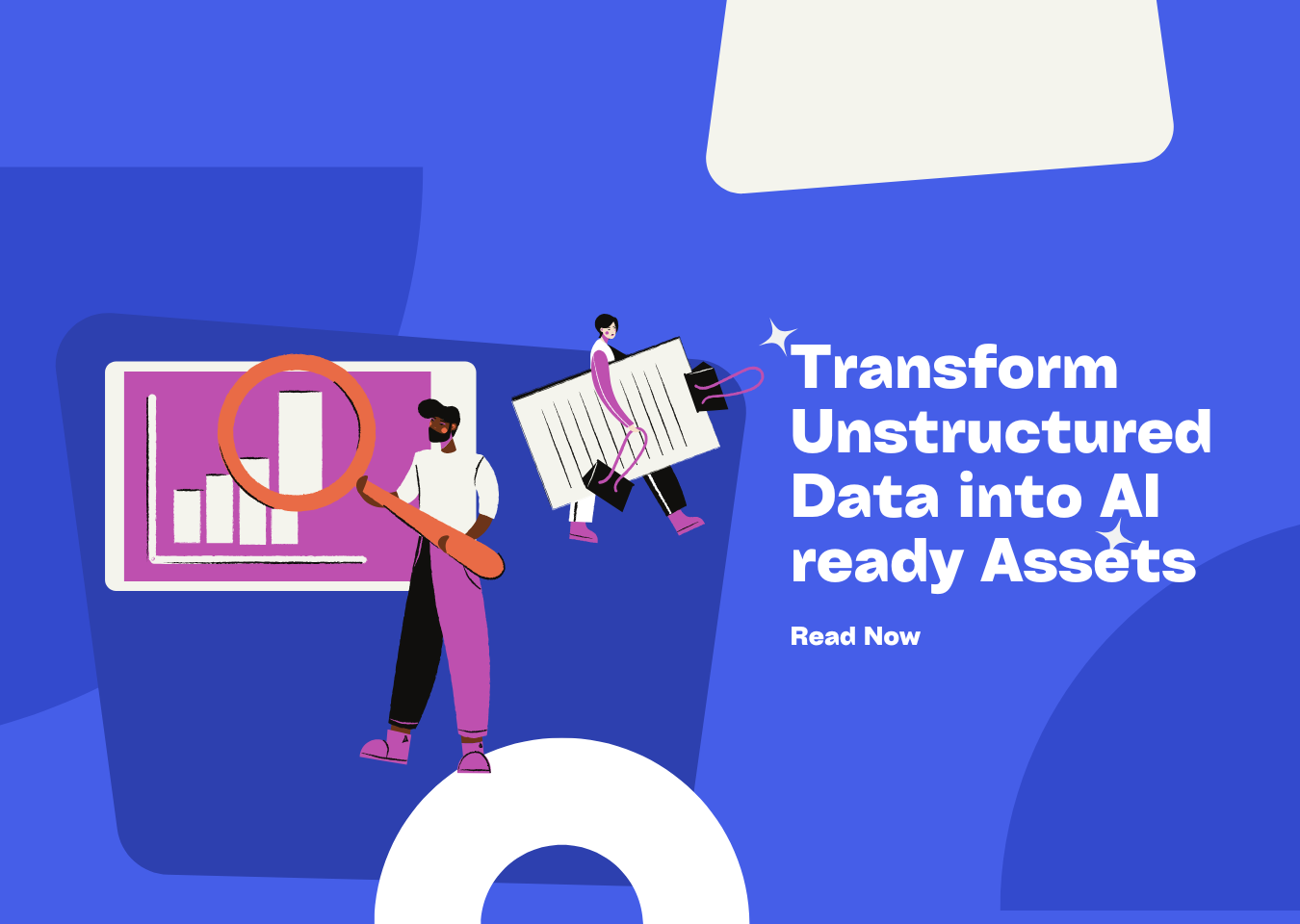Document Parsing Made Easy with RAG and LLM Integration



Imagine transforming the way you handle complex documents with cutting-edge AI. Retrieval-augmented generation (RAG) combines the power of retrieving relevant data and generating precise outputs, making document parsing faster and more accurate. RAG automation simplifies tasks by extracting meaningful insights from vast datasets, even when dealing with unstructured information. This integration of RAG and large language models (LLMs) ensures that your document analysis becomes not only efficient but also highly reliable. By leveraging this technology, you can unlock new possibilities in parsing and streamline workflows like never before.
Key Takeaways
- RAG enhances document parsing by combining data retrieval and generation, making the process faster and more accurate.
- Integrating LLMs with RAG allows for advanced tasks like summarization and data extraction, improving the relevance of outputs.
- RAG automation reduces manual effort, ensuring consistency and saving time in document analysis.
- The synergy between RAG and LLMs enables efficient handling of unstructured data, making it easier to extract meaningful insights.
- Implementing RAG and LLM integration can significantly improve accuracy in tasks such as legal document analysis and research summarization.
- Utilizing cloud-based solutions with RAG enhances scalability, allowing for the processing of large datasets without compromising performance.
- Adopting intelligent routing and embedding models optimizes the retrieval process, ensuring contextually relevant responses.
Understanding RAG and LLMs

Image Source: pexels
What is Retrieval-Augmented Generation (RAG)?
Overview of retrieval-augmented generation and its role in document parsing.
Retrieval-augmented generation (RAG) represents a breakthrough in how you can handle complex documents. It combines two essential processes: retrieving relevant information from a dataset and generating meaningful outputs based on that information. This approach ensures that your document parsing becomes more precise and efficient. By leveraging RAG, you can extract valuable insights even from unstructured or semi-structured data, which traditional methods often struggle to process.
RAG plays a vital role in document parsing by bridging the gap between raw data and actionable insights. For example, platforms like RAG Systems utilize external data retrieval to enhance the quality of generated responses. This ensures that the output aligns closely with the context of your query, making it highly reliable for tasks such as legal analysis or research summarization.
How RAG automation enhances information retrieval and generation.
RAG automation simplifies the process of information retrieval and generation by reducing manual effort. Instead of sifting through large volumes of data, you can rely on automated systems to identify and retrieve the most relevant chunks of information. Tools like Open-Parse excel in this area by breaking documents into manageable pieces, which improves the performance of large language models during response generation.
Automation also ensures consistency in results. Whether you are analyzing contracts or summarizing academic papers, RAG systems streamline the workflow, saving time and improving accuracy. This makes RAG an indispensable tool for modern document parsing tasks.
What are Large Language Models (LLMs)?
Key features and capabilities of large language models for document parsing.
Large language models (LLMs) have revolutionized how you approach document parsing. These models, trained on vast datasets, excel at understanding and generating human-like text. Their ability to comprehend context allows them to perform advanced tasks such as summarization, question answering, and data extraction with remarkable accuracy.
For instance, platforms like LlamaParse are specifically designed to optimize LLM applications. They clean and structure data before passing it to the model, ensuring that the input is of high quality. This preprocessing step enhances the model’s ability to generate precise and relevant outputs, making it a powerful tool for document parsing.
Why LLMs are essential for advanced extraction tasks.
LLMs are essential for advanced extraction tasks because they can process complex language patterns and identify key information within a document. Unlike traditional methods, which often rely on rigid rules, LLMs adapt to the nuances of natural language. This flexibility makes them ideal for handling diverse document types, from legal contracts to customer support logs.
By integrating LLMs into your workflow, you can achieve higher accuracy and relevance in your results. Their ability to learn and improve over time ensures that they remain effective even as your data evolves.
The Synergy Between RAG and LLMs
How retrieval-augmented generation complements LLMs.
The integration of retrieval-augmented generation with large language models creates a powerful synergy. RAG enhances the capabilities of LLMs by providing them with contextually relevant information. This ensures that the model generates responses that are not only accurate but also aligned with the specific needs of your task.
For example, RAG systems retrieve the most pertinent data from a document and feed it into the LLM. This dynamic addition of context improves the quality of the generated output, making it more precise and actionable. The combination of these technologies allows you to tackle complex parsing challenges with ease.
Real-world applications of RAG and LLM integration in document parsing.
The integration of RAG and LLMs has transformed document parsing across various industries. Here are some real-world applications:
- Legal Document Analysis: RAG systems can extract clauses and summarize lengthy contracts, saving time for legal professionals.
- Research Summarization: LLMs, supported by RAG, can condense academic papers into concise summaries, making it easier to grasp key findings.
- Customer Support: By retrieving relevant knowledge base articles, RAG and LLMs improve the accuracy of responses to customer queries.
These applications demonstrate how the synergy between RAG and LLMs can simplify complex tasks, enhance efficiency, and deliver reliable results.
Why Integrate RAG with LLMs for Document Parsing?
Key Benefits
Enhanced accuracy and relevance in document parsing.
Integrating retrieval-augmented generation into your document parsing workflow significantly improves accuracy. Traditional methods often struggle with unstructured documents, leading to incomplete or irrelevant results. RAG automation, however, retrieves the most contextually relevant information before generating outputs. This ensures that the extracted data aligns with your specific needs. For example, when analyzing legal contracts, RAG systems can pinpoint critical clauses with precision, reducing errors and saving time.
The combination of retrieval-augmented generation and large language models also enhances relevance. By dynamically adding context to queries, these systems ensure that the generated responses are tailored to the document’s content. This approach eliminates the guesswork often associated with manual parsing, making your results more reliable and actionable.
Scalability for large datasets and diverse document types.
Handling large datasets or diverse document types becomes effortless with RAG integration. Traditional parsing methods often falter when faced with extensive or varied data. RAG automation, on the other hand, excels in scaling across multiple formats, including PDFs, scanned images, and text-heavy files. This adaptability allows you to process thousands of documents without compromising quality.
Moreover, the ability to parse and chunk documents into manageable pieces ensures consistent performance, even with complex datasets. Whether you’re working with research papers, customer support logs, or financial reports, RAG systems maintain efficiency and accuracy at scale.
Efficiency Gains
Faster processing of complex documents with RAG automation.
RAG automation accelerates the processing of complex documents by streamlining both information retrieval and text extraction. Instead of manually sifting through pages of data, you can rely on automated systems to identify and retrieve the most relevant sections. This speed advantage is particularly valuable for time-sensitive tasks, such as summarizing research papers or reviewing contracts.
The use of retrieval-augmented generation further enhances efficiency. By breaking documents into smaller chunks, RAG systems optimize the performance of query engines and large language models. This ensures that even the most intricate documents are processed quickly and accurately.
Reduced manual effort and improved consistency.
Manual document parsing often leads to inconsistencies and errors. RAG automation eliminates these issues by standardizing the parsing process. Automated systems ensure that every document is treated uniformly, reducing the risk of oversight. For instance, when extracting data from unstructured documents, RAG systems apply consistent rules, resulting in more reliable outputs.
By reducing manual effort, you can focus on higher-value tasks. Whether you’re conducting legal analysis or preparing a knowledge base, RAG integration allows you to achieve better results with less effort. This not only saves time but also enhances the overall quality of your work.
Practical Use Cases
Legal document analysis and contract review.
Legal professionals often face the challenge of analyzing lengthy contracts. RAG systems simplify this process by extracting key clauses and summarizing critical information. This allows you to focus on decision-making rather than data extraction. The integration of retrieval-augmented generation ensures that the extracted data is both accurate and contextually relevant.
Research paper summarization and extraction.
Summarizing research papers can be time-consuming, especially when dealing with technical language. RAG automation streamlines this task by breaking down complex documents into manageable chunks. Large language models then generate concise summaries, highlighting the most important findings. This approach saves time and improves comprehension.
Customer support knowledge base retrieval.
Customer support teams often rely on extensive knowledge bases to answer queries. RAG systems enhance this process by retrieving the most relevant articles or sections. By integrating retrieval-augmented generation, you can ensure that responses are accurate and tailored to the customer’s needs. This improves both efficiency and customer satisfaction.
Step-by-Step Guide to Integration

Image Source: unsplash
Step 1: Load and Preprocess Documents
Techniques for document ingestion and cleaning.
The first step in integrating RAG with LLMs for document parsing involves loading and preprocessing your documents. This process ensures that the data is clean, structured, and ready for further analysis. Start by gathering all relevant documents, whether they are PDFs, scanned images, or text files. Use tools designed for document ingestion to extract raw text from these formats. For instance, Optical Character Recognition (OCR) software can convert scanned images into editable text.
Once the text is extracted, focus on cleaning the data. Remove unnecessary elements like headers, footers, or irrelevant metadata. Standardize the formatting to ensure consistency across all documents. Preprocessing also involves addressing issues like spelling errors, missing values, or redundant information. By preparing your documents thoroughly, you set a strong foundation for accurate parsing and efficient information retrieval.
“Software engineers building RAG systems are expected to preprocess domain knowledge captured as artifacts in different formats.” This highlights the importance of preprocessing in ensuring that the data is usable for downstream tasks.
Step 2: Chunk Text into Manageable Pieces
Importance of text chunking for retrieval-augmented generation.
After preprocessing, the next step is to divide the text into smaller, manageable chunks. This step is crucial for retrieval-augmented generation because it allows the system to focus on specific sections of the document rather than processing the entire text at once. Chunking improves the efficiency of query engines and enhances the accuracy of text extraction.
To chunk text effectively, consider the structure of your documents. Break them into logical sections, such as paragraphs or sentences. For unstructured documents, use algorithms that identify natural breaks in the text. Tools like sentence tokenizers can help automate this process. Smaller chunks make it easier for RAG systems to retrieve relevant information and provide precise outputs.
Chunking also plays a vital role in handling large datasets. By dividing the text into smaller parts, you ensure that the system can process extensive documents without compromising performance. This step is essential for achieving scalability in document parsing workflows.
Step 3: Select an Embedding Model
Criteria for choosing the right embedding model for document parsing.
Choosing the right embedding model is a critical step in the integration process. Embedding models convert text into numerical representations, enabling the system to understand and process the content. When selecting a model, consider factors like accuracy, speed, and compatibility with your dataset.
For document parsing, opt for models that excel in handling diverse and unstructured documents. Models like Sentence-BERT or OpenAI’s embeddings are popular choices due to their ability to capture semantic meaning effectively. Evaluate the model’s performance on tasks like similarity matching and information retrieval to ensure it meets your requirements.
Another important criterion is scalability. The embedding model should handle large datasets without significant performance degradation. Additionally, consider the ease of integration with your existing systems. Many modern models offer APIs that simplify the implementation process, making it easier to incorporate them into your RAG workflow.
By selecting the right embedding model, you enhance the overall efficiency and accuracy of your document parsing system. This step ensures that the integration of RAG and LLMs delivers optimal results.
Step 4: Create a Vector Index
Building a vector index is a crucial step in integrating retrieval-augmented generation into your document parsing workflow. A vector index organizes your document data into a format that allows for efficient retrieval of relevant information. This step ensures that your system can quickly locate and process the most pertinent sections of your documents.
To create a vector index, start by selecting a vector database. Tools like Pinecone, Weaviate, or FAISS are popular choices for managing vector indices. These tools specialize in storing and retrieving high-dimensional vectors, which represent the semantic meaning of your text. Once you choose a tool, feed the preprocessed and chunked text into the database. Each chunk is converted into a vector using the embedding model you selected earlier. The database then organizes these vectors for fast and accurate retrieval.
Managing your vector index is equally important. Regularly update the index to include new documents or remove outdated ones. This practice ensures that your system remains relevant and effective. Additionally, monitor the performance of your vector database to identify and resolve any bottlenecks. A well-maintained vector index forms the backbone of efficient document parsing, enabling your query engine to retrieve the most contextually relevant information.
Step 5: Implement Query Execution
Query execution is where the magic of retrieval-augmented generation happens. In this step, your system retrieves relevant chunks from the vector index and uses them to generate meaningful responses with large language models. This process bridges the gap between raw document data and actionable insights.
To implement query execution, integrate a robust query engine into your system. The query engine interacts with the vector index to locate the most relevant text chunks based on user queries. For example, if you’re analyzing unstructured documents like legal contracts, the engine identifies and retrieves clauses that match the query’s context. Once retrieved, these chunks are passed to the large language model, which generates a coherent and contextually accurate response.
Focus on optimizing the query engine for speed and accuracy. Use ranking algorithms to prioritize the most relevant chunks and ensure that the system delivers precise results. By fine-tuning this step, you enhance the overall efficiency of your document parsing workflow, making it faster and more reliable.
Step 6: Test and Optimize the System
Testing and optimization are essential to ensure that your RAG system performs at its best. This step involves evaluating the system’s performance and making adjustments to improve its accuracy and efficiency.
Begin by testing the system with a variety of document types and queries. Measure key metrics such as retrieval accuracy, response relevance, and processing speed. Identify areas where the system struggles, such as handling complex queries or parsing unstructured documents. Use these insights to fine-tune the embedding model, vector index, and query engine.
Optimization also involves tailoring the system to specific use cases. For instance, if you’re working with AI-driven customer support, focus on improving the system’s ability to retrieve knowledge base articles. Regularly update the vector index and retrain the embedding model to adapt to new data. Continuous learning and improvement ensure that your system remains effective over time.
By thoroughly testing and optimizing your RAG system, you can achieve unparalleled accuracy and efficiency in document parsing. This step transforms your workflow, enabling you to handle even the most challenging tasks with ease.
Advanced Techniques and Best Practices
Sentence Window Retrieval
Improving retrieval granularity for better extraction.
When working with complex documents, achieving precise results often requires breaking down the text into smaller, more manageable sections. Sentence window retrieval enhances this process by focusing on specific sentences or small groups of sentences within a document. This technique improves the granularity of retrieval, ensuring that the system identifies the most relevant information for your query.
For example, instead of analyzing an entire paragraph, sentence window retrieval narrows the focus to individual sentences. This approach reduces noise and increases the accuracy of the parsing process. Tools like sentence tokenizers can automate this step, making it easier to implement in your workflow. By applying this method, you can extract critical insights without sifting through irrelevant content.
This technique proves especially useful in scenarios where precision is paramount, such as legal document parsing or research paper analysis. It ensures that your query engine retrieves only the most pertinent data, streamlining the extraction process and improving overall efficiency.
Intelligent Routing
Directing queries to the most relevant documents using metadata.
Intelligent routing optimizes document parsing by directing queries to the most relevant documents based on metadata. Metadata, such as tags, timestamps, or categories, provides valuable context that helps the system prioritize specific documents over others. This targeted approach reduces processing time and enhances the relevance of the results.
For instance, if you are analyzing compliance documents, metadata can help the system focus on files related to specific regulations or time periods. Intelligent routing leverages this information to ensure that your queries yield accurate and contextually appropriate responses. Systems like Neo4j, which integrate metadata with vector search, make this process even more efficient.
By incorporating intelligent routing into your workflow, you can handle large datasets more effectively. This technique not only improves the speed of document parsing but also ensures that the results align closely with your objectives. It is an essential strategy for managing diverse and extensive document collections.
Combining RAG with Other AI Techniques
Integrating retrieval-augmented generation with knowledge graphs.
Combining retrieval-augmented generation with other AI techniques, such as knowledge graphs, unlocks new possibilities for document parsing. Knowledge graphs organize information into interconnected nodes, making it easier to visualize relationships and retrieve relevant data. When integrated with RAG, these graphs enhance the system’s ability to generate contextually rich and accurate responses.
For example, a knowledge graph can provide additional context for a query by linking related concepts or entities. This supplementary information improves the quality of the generated output, especially in complex scenarios like customer support or research analysis. Tools like Neo4j offer robust support for integrating knowledge graphs with RAG systems, enabling seamless implementation.
This combination also supports continuous learning by updating the knowledge graph with new data over time. As a result, your system becomes more adaptive and effective in handling evolving datasets. By leveraging this synergy, you can achieve unparalleled accuracy and depth in document parsing tasks.
Challenges and Solutions
Common Challenges
Handling noisy or unstructured data in document parsing.
When working with documents, you often encounter noisy or unstructured data. This type of data includes incomplete sentences, irrelevant information, or inconsistent formatting. For example, scanned documents may contain errors from Optical Character Recognition (OCR) software, while unstructured text like emails or handwritten notes lacks a clear organization. These issues make parsing difficult and reduce the accuracy of results.
Noisy data can also lead to irrelevant retrievals during the parsing process. Without proper cleaning, your system might retrieve unrelated chunks, which affects the quality of the generated output. Unstructured data, on the other hand, challenges the system’s ability to identify meaningful patterns or relationships. This is especially problematic when dealing with large datasets, where inconsistencies multiply and slow down the entire workflow.
Addressing these challenges requires a systematic approach. By understanding the root causes of noise and unstructured formats, you can implement targeted solutions to improve the reliability of your document parsing system.
Solutions and Workarounds
Preprocessing techniques and optimizing vector indices.
Preprocessing is your first line of defense against noisy and unstructured data. Start by cleaning the text to remove irrelevant elements like headers, footers, or duplicate content. Use tools like OCR software for scanned documents, but ensure that you manually verify and correct any errors it introduces. Tokenization, which breaks text into smaller units like words or sentences, helps structure unorganized data for better parsing.
Standardizing the format of your documents is another essential step. Convert all files into a consistent format, such as plain text or structured JSON. This ensures that your system processes each document uniformly, reducing errors during retrieval and generation.
Optimizing vector indices further enhances the efficiency of your system. A well-maintained vector index ensures that your system retrieves only the most relevant chunks of information. Regularly update the index to include new documents and remove outdated ones. Fine-tune the embedding model to improve the semantic representation of your text, which directly impacts the accuracy of retrieval. According to Prompting Guide AI, post-retrieval processing can refine results without modifying the language model, while fine-tuning improves text generation quality. These techniques ensure that your system delivers precise and actionable outputs.
Addressing Scalability Issues
Leveraging cloud-based solutions for large-scale document parsing.
Scaling your document parsing system to handle large datasets requires robust infrastructure. Cloud-based solutions provide the flexibility and computational power needed for this task. Platforms like AWS, Google Cloud, or Azure offer scalable storage and processing capabilities, allowing you to manage thousands of documents efficiently.
Cloud-based systems also support distributed computing, which speeds up the parsing process. By dividing tasks across multiple servers, you can process large datasets in parallel, reducing the time required for retrieval and generation. These platforms also integrate seamlessly with tools like vector databases, ensuring smooth operation even as your dataset grows.
An intelligent routing layer further enhances scalability. As highlighted in Winder.ai, intelligent routing balances the amount of context provided to large language models, ensuring both flexibility and cost-effectiveness. By directing queries to the most relevant documents, this technique reduces the computational load and improves the relevance of results.
Leveraging cloud-based solutions and intelligent routing ensures that your system remains efficient and reliable, even when dealing with extensive and diverse datasets.
Integrating RAG with LLMs transforms document parsing into a seamless and efficient process. This combination enhances the accuracy of results by retrieving relevant information and generating precise outputs. The step-by-step approach simplifies complex workflows, making it accessible for anyone to implement. By leveraging this AI-powered synergy, you can handle diverse document types with ease and achieve consistent, high-quality outcomes. Explore RAG automation and LLM integration to unlock new possibilities in your projects and redefine how you manage documents.
FAQ
What is Retrieval-Augmented Generation (RAG), and how does it enhance document parsing?
RAG combines the strengths of retrieving relevant information from external sources and generating responses using large language models (LLMs). This approach ensures that your document parsing becomes more accurate and contextually relevant. By integrating real-time external knowledge, RAG addresses the limitations of static training data in LLMs. It retrieves the most pertinent information from external knowledge bases, reducing factual errors and improving the quality of the generated outputs.
How does RAG handle unstructured data effectively?
RAG excels at processing unstructured data by breaking it into manageable chunks and retrieving only the most relevant sections. This method ensures that even noisy or unorganized data, such as scanned documents or emails, can be parsed accurately. Preprocessing techniques like tokenization and cleaning further enhance the system’s ability to extract meaningful insights from unstructured formats.
Why should you integrate RAG with LLMs for intelligent document parsing?
Integrating RAG with LLMs transforms document parsing into a dynamic and efficient process. RAG augments LLMs with current and relevant information from external sources, enabling them to generate more informed and accurate responses. This synergy ensures that your parsing system adapts to diverse document types and scales effortlessly, making it ideal for tasks like legal analysis, research summarization, and customer support.
What are the key benefits of RAG automation in document parsing?
RAG automation reduces manual effort, enhances accuracy, and improves consistency in document parsing. By automating the retrieval and generation processes, RAG systems save time and minimize errors. They also ensure scalability, allowing you to handle large datasets and diverse document formats without compromising performance.
How does RAG ensure contextually relevant responses?
RAG integrates information from both the query and the retrieved documents to produce context-aware answers. By dynamically adding context to the LLM’s prompts, RAG ensures that the generated responses align closely with the specific needs of your task. This capability makes it invaluable for knowledge-intensive applications like compliance checks or academic research.
Can RAG systems handle large-scale document parsing?
Yes, RAG systems are designed to scale efficiently. By leveraging cloud-based solutions and distributed computing, they can process extensive datasets quickly. Intelligent routing further optimizes performance by directing queries to the most relevant documents, ensuring that your system remains effective even when dealing with thousands of files.
What role do embedding models play in RAG systems?
Embedding models convert text into numerical representations, enabling RAG systems to understand and process content effectively. These models help identify semantic similarities between queries and document chunks, ensuring accurate retrieval. Choosing the right embedding model, such as Sentence-BERT or OpenAI embeddings, is crucial for achieving high-quality results in document parsing.
How does RAG minimize contradictions and inconsistencies in generated text?
RAG fine-tunes LLMs to improve the quality of generated text. By leveraging external knowledge bases and refining the retrieval process, RAG reduces contradictions and inconsistencies. This ensures that the outputs remain accurate, reliable, and aligned with the context of your queries.
What are some practical use cases for RAG in document parsing?
RAG has numerous applications across industries:
- Legal Document Analysis: Extracting clauses and summarizing contracts.
- Research Summarization: Condensing academic papers into concise summaries.
- Customer Support: Retrieving relevant knowledge base articles for accurate responses.
These use cases demonstrate how RAG simplifies complex tasks and enhances efficiency.
How does RAG combine semantic search with generative AI capabilities?
RAG integrates semantic search with the generative power of LLMs to provide informed, context-aware answers. Semantic search retrieves the most relevant information from vast datasets, while LLMs generate coherent and actionable responses. This combination allows you to access extensive knowledge without storing it all within the model, making RAG a powerful tool for intelligent document parsing.
📖See Also
- Demystifying-Unstructured-Data-Analysis-A-Complete-Guide
- Cracking-Document-Parsing-Technologies-and-Datasets-for-Structured-Information-Extraction
- Comparison-of-API-Services-Graphlit-LlamaParse-UndatasIO-etc-for-PDF-Extraction-to-Markdown
- Comparing-Top-3-Python-PDF-Parsing-Libraries-A-Comprehensive-Guide
- Assessment-Unveiled-The-True-Capabilities-of-Fireworks-AI
- Assessment-of-Microsofts-Markitdown-series2-Parse-PDF-files
- Assessment-of-MicrosoftsMarkitdown-series1-Parse-PDF-Tables-from-simple-to-complex
- AI-Document-Parsing-and-Vectorization-Technologies-Lead-the-RAG-Revolution
Subscribe to Our Newsletter
Get the latest updates and exclusive content delivered straight to your inbox